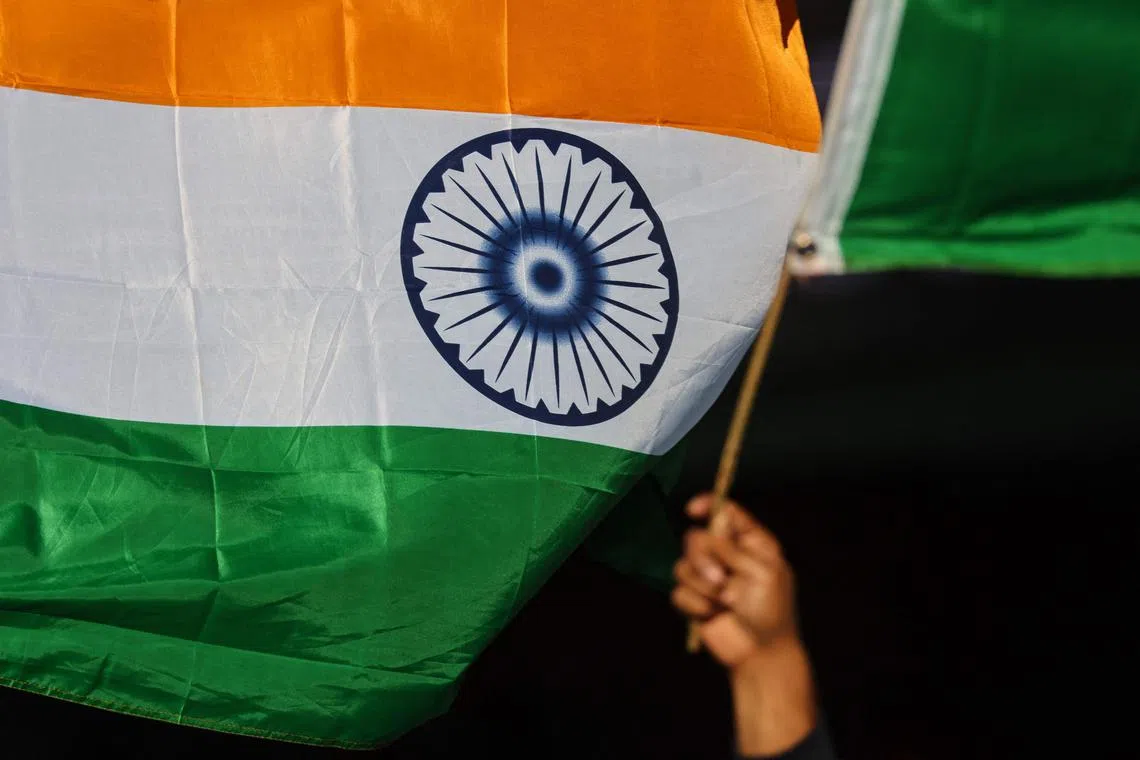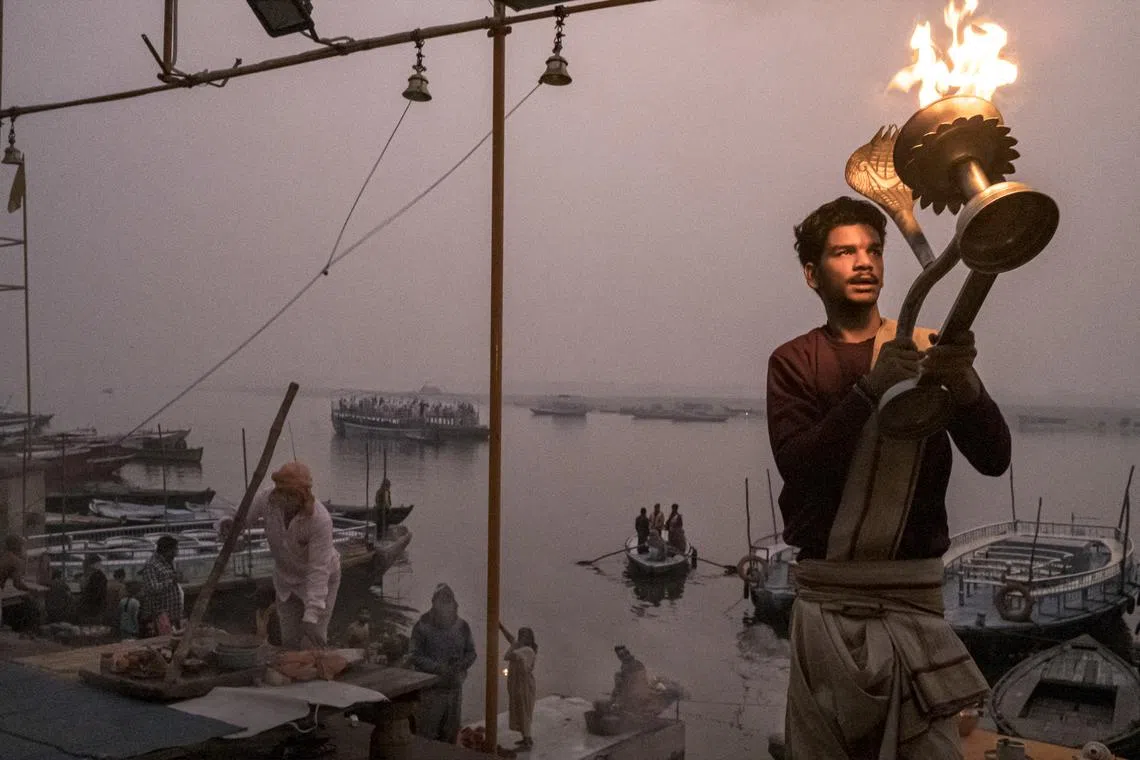Russia’s war could make it India’s world
Sign up now: Get insights on Asia's fast-moving developments

The post-war order had no place for India at the top table. But now, the country may have the power to tilt the balance toward an order dominated by democratic pluralism or by repressive leaders.
PHOTO: AFP
Follow topic:
NEW DELHI – Seated in the domed, red sandstone government building unveiled by the British Raj less than two decades before India threw off imperial rule, Mr S. Jaishankar, the Indian foreign minister, needs no reminder of how the tides of history sweep away antiquated systems to usher in the new.
Such, he believes, is today’s transformative moment. A “world order which is still very, very deeply Western”, as he put it in an interview, is being hurried out of existence by the impact of the war in Ukraine, to be replaced by a world of “multi-alignment” where countries will choose their own “particular policies and preferences and interests”.
Certainly, that is what India has done since the war in Ukraine began Feb 24. It has rejected American and European pressure at the United Nations to condemn the Russian invasion, turned Moscow into its largest oil supplier and dismissed the perceived hypocrisy of the West. Far from apologetic, its tone has been unabashed and its self-interest broadly naked.
With its almost 1.4 billion inhabitants, soon to overtake China as the world’s most populous country, I ndia has a need for cheap Russian oil
Here comes Prime Minister Narendra Modi’s India, pursuing its own interests with a new assertiveness, throwing off any sense of inferiority and rejecting unalloyed alignment with the West. But which India will strut the 21st-century global stage, and how will its influence be felt?
The country is at a crossroads, poised between the vibrant plurality of its democracy since independence in 1947 and a turn toward illiberalism under Mr Modi. His “Hindu Renaissance” has threatened some of the core pillars of India’s democracy: equal treatment of all citizens, the right to dissent, the independence of courts and the media.
Democracy and debate are still vigorous – Mr Modi’s Hindu nationalist Bharatiya Janata Party lost a municipal election in Delhi
The post-war order had no place for India at the top table. But now, at a moment when Russia’s military aggression under President Vladimir Putin has provided a vivid illustration of how a world of strongmen and imperial rivalry would look, India may have the power to tilt the balance toward an order dominated by democratic pluralism or by repressive leaders.
Which way Mr Modi’s form of nationalism will lean remains to be seen. It has given many Indians a new pride and bolstered the country’s international stature, even as it has weakened the country’s pluralist and secularist model.
There are no Muslims in Mr Modi’s Cabinet. Hindu mob attacks on Muslims have been met with silence
“Hatred has penetrated into society at a level that is absolutely terrifying,” acclaimed Indian novelist Arundhati Roy said.
That may be, but for now, Mr Modi’s India seems to brim with confidence.
The Ukraine war, compounding the effects of the Covid-19 pandemic, has fuelled the country’s ascent. Together they have pushed corporations to make global supply chains less risky by diversifying toward an open India and away from China’s surveillance state. They have accentuated global economic turbulence from which India is relatively insulated by its huge domestic market.
Those factors have contributed to buoyant projections that India, now No. 5, will be the world’s third-largest economy by 2030, behind only the United States and China.
Communion and division
Mr Modi, 72, who adopted Varanasi, Hinduism’s holiest city, as his political constituency in 2014 when he embarked on his campaign to lead India, saying he had been “called by the mother Ganges” – the river of life – has cut a pinkish sandstone gash through it.
Known as “the corridor” and opened a year ago, the project connects the Kashi Vishwanath Temple, dedicated to the Hindu god Shiva, to the riverfront a quarter-mile away.
The broad and almost eerily spotless pedestrian expanse, with its museum and other tourist facilities, links the city’s most revered temple to the river where Hindus wash away their sins. It is quintessential Modi.

A Hindu ritual on the banks of the Ganges River in Varanasi, northern India, on Dec 19, 2022. Indian PM Narendra Modi has chosen Varanasi as a core vehicle of his assertion of India as a Hindu nation, raising tensions with Muslims.
PHOTO: NYTIMES
Cut through a labyrinth of more than 300 homes that were destroyed to make way for it, the passage intertwines the prime minister’s political life with the deepest of Hindu traditions. At the same time, it proclaims his readiness to fast-forward India through bold initiatives that break with chaos and decay. Mr Modi, a Hindu nationalist and tech enthusiast, is a disrupter.
A self-made man from a humble background in the western state of Gujarat – and from a low status in India’s caste system, or social hierarchy – Mr Modi has come to embody an aspirational India.
Vishwambhar Nath Mishra, a Hindu religious leader in Varanasi and an engineering professor, said that the corridor had been a “blunder” that had destroyed 142 old shrines, an example of the bulldozing style Mr Modi favours.
“We have always been a unique family in Varanasi, Muslims and Christians and Hindus who sit down and work things out, but Modi chooses to create tensions to get elected,” Prof Mishra said. “If he is trying to establish a Hindu nation, that is very dangerous.”
It is not easy to get into the complex, at the top of Mr Modi’s new corridor, where the 17th-century white-domed Gyanvapi Mosque abuts the Kashi Vishwanath Temple. Intense security checks take a long time to negotiate because this is an epicenter of the inflamed Hindu-Muslim tension in India.
Armed guards are everywhere. They stand beside the mosque, which is encased behind a 6m metal fence topped with coils of razor wire.
A flurry of legal cases now centers on the mosque. A court survey this year claimed to have uncovered an ancient lingam on the premises of the mosque – so establishing, at least for hardline Hindus, that they should be allowed to pray there. Large Muslim prayer gatherings have been banned.

A bazaar near the entrance to Kashi Vishwanath Temple and Gyanvapi Mosque in Varanasi, northern India. Critics say that Indian PM Narendra Modi’s bulldozing style has set communities against one another.
PHOTO: NYTIMES
In the ascendant Hindu narrative that Mr Modi has done nothing to discourage, India belongs in the first place to its Hindu majority. The Muslim interlopers of the Mughal Empire and other periods of conquest take second place. Mosque must yield to temple if it can be demonstrated that a temple predated it.
If Mr Putin has chosen to portray Ukraine as a birthplace of the Russian world inseparable from the motherland and embraced the Orthodox Church as a bastion of his power, Mr Modi has chosen Varanasi as a core vehicle of his assertion of India as essentially a Hindu nation. Of course, the Indian leader did so in the interest of power consolidation, not conquest.
Three decades ago, the razing by a Hindu mob of a 16th-century mosque in the northern Indian city of Ayodhya, which Hindus believe is the birthplace of the god Ram, led to the death of 2,000 people and propelled the rise of Mr Modi’s party.
A temple is now being built there.
Faced by such moves, Ms Roy, the novelist, voiced a common concern. “You know, the Varanasi sari, worn by Hindus, woven by Muslims, was a symbol of everything that was so interwoven and is now being ripped apart,” she said. “A threat of violence hangs over the city.”
A delicate balance
India believes that the interconnectedness of today’s world outweighs the pull of fragmentation and makes a nonsense of talk of a renewed Cold War. If a period of disorder seems inevitable as Western power declines, it will most likely be tempered by economic interdependence, the Indian argument goes.
With inequality worsening, food security worsening, energy security worsening and climate change accelerating, more countries are asking what answers the post-1945 Western-dominated order can provide. India, it seems, believes it can be a broker, bridging East-West and North-South divisions.
“I would argue that generally in the history of India, India has had a much more peaceful, productive relationship with the world than, for example, Europe has had,” Mr Jaishankar said. “Europe has been very expansionist, which is why we had the period of imperialism and colonialism. But in India, despite being subjected to colonialism for two centuries, there’s no animus against the world, no anger. It is a very open society.”
It is also situated between two hostile powers: Pakistan and China.
In December, there was another skirmish at the 3,400km disputed Chinese-Indian border.
Escalation at the border is possible at any moment, but it appears unlikely that India can count on Russia, given Moscow’s growing economic and military dependence on China. That makes India’s strategic relationship with the West critical.
In light of the war in Ukraine, however, each party is adjusting to the fact that the other will pick and choose its principles.
India is in a delicate position. In the face of American criticism, the country chose to take part this year in Russian military exercises
This is Indian multi-alignment at work. The Ukraine war has only reinforced New Delhi’s commitment to this course. Washington has worked hard over many years to make India Asia’s democratic counterbalance to President Xi Jinping’s authoritarian China. But the world, as seen from India, is too complex for such binary options.
If the Biden administration has been unhappy with India’s business-as-usual approach to Mr Putin since Russia’s invasion of Ukraine, it has also been accepting of it; American realpolitik, as China rises, demands that Mr Modi not be alienated.

